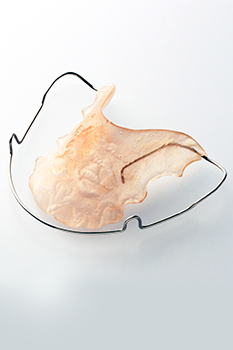Retainers Keep Teeth from Shifting
Whether you are a child or an adult, your orthodontist will want you to use a retainer after your braces are removed.

The job of the retainer is to preserve and stabilize the results from your orthodontic treatment, according to the American Association of Orthodontists (AAO). Whether retainers are fixed—bonded to the back of the teeth—or they are removable, retainers are used to keep teeth from shifting away from the position that the braces put them in.
Teeth on the move
Many people don’t realize that teeth continue to move throughout life. Without retainers, the forces in your jaws continually drive your teeth toward the middle. It doesn’t take much movement to ruin the smile and bite that your orthodontist fixed by having you wear braces.
According to the AAO, about 5 million people in the U.S. wear braces at any given time. Orthodontists recommend that all of those people probably should be in retainers when their braces are removed. Many may benefit from retainers long after their braces are removed.
Bonded vs. removable
Retainers may cost between $250 and $750 for the appliance, plus the exam time.
Roughly half of people who wear retainers have the fixed, bonded type. The other half wear removable retainers. Your orthodontist will help you determine which type is better for you.
If you have removable retainers, your orthodontist may ask you to wear them for 12 hours a day for the first six months and then to wear the retainer during sleeping hours indefinitely.
If the retainer starts to feel a little snug, that's a sign that it should be worn more often because the teeth are beginning to shift slightly out of position.
Connect with us:
Download our App: